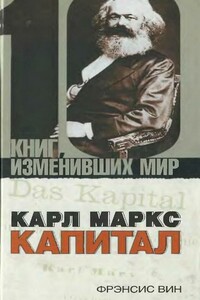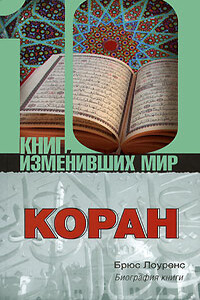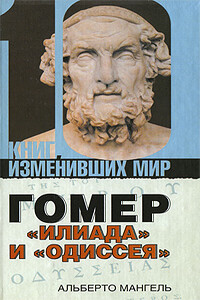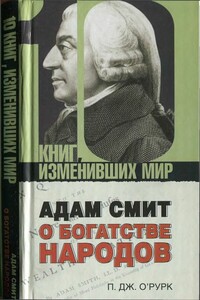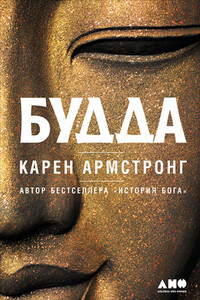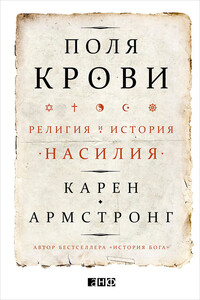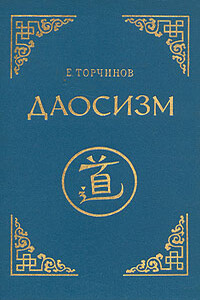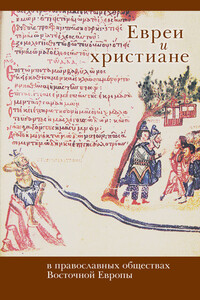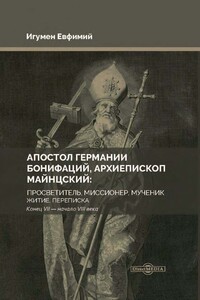Библия: Биография книги (примечания)
1
Margaret Barker, The Gate of Heaven: The History and Symbolism of the Temple in Jerusalem (London, 1991), pp. 26-29; R. E. Clements, God and Temple (Oxford, 1965), p. 65.
2
Иез. 1.
3
Иез. 3:1-3.
4
Иез. 40:8, Пс. 137.
5
Geo Widengren, The Ascension of the Apostle and the Heavenly Book, Uppsala and Leipzig, 1950, passim; Wilfred Cantwell Smith, What Is Scriptures? A Comparative Approach, London, 1993, pp. 59-61.
6
Втор. 26:5-9. Возможно, этот весьма ранний текст произносился на празднестве, посвящённом завету.
7
Иис. Н. 3; 24.
8
Например, Пс. 2, 48, 87 и 110.
9
Frank Moore Cross, Canaanite Myth and Hebrew Epic: Essays in the History of the Religion of Israel, Cambridge, Mass., and London, 1972, pp. 148-50, 162-3.
10
William M. Schniedewind, How the Bible Became a Book: The Textualization of Ancient Israel, Cambridge, 2004, pp. 35-47.
11
Frank Moore Cross, From Epic to Canon: History and Literature in Ancient Israel, Baltimore and London, 1998, pp. 41-2.
12
Суд. 5:4-5; Авв. 3:4-8. Это древние тексты, датируемые десятым веком до н. э.
13
George W. Mendenhall, The Tenth Generation: The Origins of Biblical Tradition, Baltimore and London, 1973; N. P. Lemche, Early Israel: Anthropological and Historical Studies on the Israelite Society Before the Monarchy, Leiden, 1985; D. C. Hopkins, The Highlands of Canaan, Sheffield, 1985; James D. Martin, «Israel as a Tribal Society» in R. E. Clements (ed.), The World of Ancient Israel: Sociological, Anthropological and Political Perspectives, Cambridge, 1989, pp. 94-114; H. G. M. Williamson, «The Concept of Israel in Transition» in Clements, The World of Ancient Israel, pp. 141-63.
14
Втор. 32:8-9.
15
Пс. 82.
16
Пс. 47-48, 96, 148-51.
17
Пс. 89:5-8; Mark S. Smith, The Origins of Biblical Monotheism: Israel’s Polytheistic Background and the Ugaritic Texts, New York and London, 2001, p. 9.
18
Mark S. Smith, The Early History of God: Yahweh and the Other Deities in Ancient Israel, New York and London, 1990, pp. 44-9.
19
R. E. Clements, Abraham and David, London, 1967.
20
David S. Sperling, The Original Torah: The Political Intent of the Bible’s Writers, New York and London, 1998, pp. 89-90.
21
Исх. 24:9-31; 18. Schniedewind, How the Bible Became a Book, pp. 121-34.
22
Исх. 24:9, 11. Smith, The Origins of Biblical Monotheism, p. 86.
23
Ос. 6:6.
24
Ос. 11:5-6.
25
Ам. 1:3-5; 6:13; 2:4-16.
26
Ам. 5:24.
27
Ис. 6:1-9.
28
Ис. 6:11-13.
29
Ис. 6:3.
30
Ис. 2:10-13; 10:5-7. ср. Пс. 46:5-6.
31
William G. Dever, What Did the Biblical Writers Know and When Did They Know It? What Archaeology Can Tell Us About the Reality of Ancient Israel, Grand Rapids, Mich., and Cambridge, UK, 2001, p. 280.
32
Ис. 7:14. Это буквальный перевод данного стиха, не совпадающий с традиционной версией иерусалимской Библии.
33
Ис. 9:1.
34
Ис. 9:5-7.
35
4 Цар. 21:2-7; 23:11; 23:10; Иез. 20:25-26; 22:30.
36
Ср. Пс. 68:18; 84:12. Gosta W. Ahlstrom, The History of Ancient Palestine, Minneapolis, 1993, p. 734.
37
4 Цар. 22.
38
Исх. 24:3.
39
Исх. 24:4-8. Это одно из двух мест в Библии, где встречается словосочетание «сефер тора». Schniedewind, How the Bible Became a Book, pp. 124-6.
40
4 Цар. 23:4-20.
41
Втор. 12-26.
42
Втор. 11:21.
43
R. E. Clements, God and Temple, Oxford, 1965, pp. 89-95; Sperling, The Original Torah, pp. 146-7.
44
3 Цар. 8:27.
45
Суд. 2:7.
46
3 Цар. 13:1-2; 4 Цар. 23:15-18; 4 Цар. 23:25.
47
Иер. 8:8-9; Schniedewind, How the Bible Became a Book, pp. 114-17.
48
Haym Soloveitchik. Rupture and Reconstruction: The Transformation of Contemporary Orthodoxy // Tradition, 1994. Vol. 28.
49
Втор. 12:2-3.
50
Иис. H. 8:24-25.
51
4 Цар. 21:10-15.
52
Cross, Canaanite Myth and Hebrew Epic, pp. 321-5.
53
Лев. 17-26.
54
Лев. 25-7; 35-8; 40.
55
Исх. 29:45-46.
56
Cross, Canaanite Myth and Hebrew Epic, p. 321.
57
Исх. 40:34, 36-8.
58
Cross, Canaanite Myth and Hebrew Epic, p. 421.
59
Peter Ackroyd, Exile and Restoration: A Study of Hebrew Thought in the Sixth Century BC, London, 1968, pp. 254-5.
60
Лев. 19:2; каддош (святой) также значит «отдельный; иной».
61
Лев. 26:12; перев. Cross, Canaanite Myth and Hebrew Epic, p. 298.
62
Лев. 25.
63
Лев. 19:33-34.
64
Быт. 2:5-17.
65
Smith, Origins of Biblical Monotheism, pp. 167-71.
66
Пс. 89:10-13; 93:1-4; He. 27:1; Иов 7:12; 9:8; 26:12; 38:7-11.
67
Быт. 1:31.
68
Ис. 44:28.
69
Ис. 41:24.
70
Ис. 45:5.
71
Ис. 51:9-10.
72
Ис. 42:1-4; 49:1-6; 50:4-9; 52:13; 53:12.
73
Ис. 49:6.
74
Мал. 1:6-14; 2:8-9.
75
Точно датировать этот период очень сложно. См. Gosta W. Ahlstrom, The History of Ancient Palestine, Minneapolis, 1993, pp. 880-83; Elias J. Bickerman, The Jews in the Greek Age, Cambridge, Mass., 1988, pp. 29-32; W. D. Davies and Louis Finkelstein (eds), The Cambridge History of Judaism, 2 vols, Cambridge, UK, 1984, vol. I, pp. 144-53.
76
Изначально колено Левитов выделилось, чтобы служить Яхве в его скинии в пустыне. (Числ. 1:48-53; 3:5-40). Но, возвратившись из плена, они стали священниками второго ранга, подчинёнными тем священникам, которые были прямыми потомками Аарона, брата Моисея.
77
Неем. 8:7-8.
78
Неем. 8:12-16.
79
Michael Fishbane, The Garments of Torah, Essays in Biblical Hermeneutics, Bloomington and Indianapolis, 1989, pp. 64-5; Gerald L. Bruns, «Midrash and Allegory; The Beginnings of Scriptural Interpretation», in Robert Alter and Frank Kermode (eds), The Literary Guide to the Bible, London, 1978, pp. 626-7.
80
Ездр. 1:6. Перевод: Fishbane, Garments of Torah, p. 65.
81
Ездр. 1:10. Перевод: там же, p. 66.
82
Ездр. 1:6, 9; ср. Иез. 1:3.
83
1 Цар. 9:9; 3 Цар. 22:8, 13, 19; ср. Неем. 7:65.
84
Wilfred Cantwell Smith, What Is Scripture? A Comparative Approach, London, 1993, p. 290.
85
Ездр. 10.
86
Fishbane, Garments of Torah, p. 64.
87
Bruns, «Midrash and Allegory», pp. 626-7.
88
Прит. 29:4, 5.
89
3 Цар. 5:9-14.
90
Иов. 42:3.
91
Книга Премудрости Иисуса, сына Сирахова, 24:1-22. (Эта книга также называется «Экклесиастикус»)
92
Книга Премудрости Иисуса, сына Сирахова, 24:23.
93
Прит. 8:22, 30-31.
94
Книга Премудрости Иисуса, сына Сирахова, 24:20.
95
Книга Премудрости Иисуса, сына Сирахова, 24:21.
96
Книга Премудрости Иисуса, сына Сирахова, 24:28-29.
97
Книга Премудрости Иисуса, сына Сирахова, 35:1-6.
98
Книга Премудрости Иисуса, сына Сирахова, 35:7-11.
99
Книга Премудрости Иисуса, сына Сирахова, 24:33.
100
Fishbane, Garments of Torah, pp. 67-9; Donald Harman Akenson, Surprassing Wonder, The Invention of the Bible and the Talmuds, New York, San Diego and London, 1998, pp. 89-90.
101
Иез. 14:14; 28:15.
102
Дан. 1:4.
103
Дан. 1:18.
104
Дан. 7:25.
105
Дан. 11:31.
106
Дан. 7:13-14.
107
Иер. 25:11-12; Дан. 9:3.
108
Дан. 9:3.
109
Дан. 10:3.
110
Дан. 9:21; 10:16 ср. Ис. 6:6-7; Дан. 10:4-6 ср. Иез. 1:1, 24, 26-28.
111
Дан. 11:35; 12:9-10.
112
Akenson, Surpassing Wonder, pp. 160-67.
113
Jacob Neusner, «Judaism and Christianity in the First Century», in Philip R. Davies and Richard T. White (eds), A Tribute to Geza Vermes; Essays in Jewish and Christian Literature and History, Sheffield, 1990, pp. 256-7.
114
Fishbane, Garments of Torah, pp. 73-6.
115
Bruns, «Midrash and Allegory», p. 634.
116
Иосиф Флавий, Иудейские древности, 18.21. Исследователи по-разному оценивают численность населения Палестины в то время, некоторые указывают цифру 2,5 млн., другие — около 1 млн., некоторые — всего 500 000.
117
Jacob Neusner, «Varieties of Judaism in the Formative Age», in Arthur Green (ed.), Jewish Spirituality, 2 vols, London, 1986, 1988, p. 185; E. P. Sanders, Judaism: Practice and Belief, 63 BCE to 66 CE, London and Philadelphia, 1992, pp. 342-7.
118
Иосиф Флавий, Иудейские древности, 17.42.
119
Akenson, Surpassing Wonder, pp. 144-70.
120
Ibid., стр. 171-89.
121
Псалмы царя Соломона 17:3. Перевод Акенсона.
122
Florentino Garcia Martinez (ed.), The Dead Sea Scrolls Translated, Leiden, 1994, p. 138.
123
Иосиф Флавий, Иудейская война, перев. G. A. Williamson, Harmondsworth, 1959, 2:258-60; Josephus, Jewish Antiquities, 20:97-9, ср. Деян. 5:36.
124
Мат. 3:1-2.
125
Лук. 3:3-14; Иосиф Флавий, Иудейские древности, 18:116-119.
126
Мар. 1:14-15. Термины «Царство Божие» и «Царство Небесное» использовались как взаимозаменяемые. Некоторые иудеи считали более подобающим избегать слова «Бог», «Божий» и предпочитали заменять его словом «Небесный».
127
Jaroslav Pelikan, Whose Bible Is It? A History of the Scriptures Through the Ages, New York, 2005, pp. 36-44; Akenson, Surpassing Wonder, pp. 124-5; Cantwell Smith, What Is Scripture?, p. 58; Bruns, «Midrash and Allegory», pp. 636-7.
128
Moses Hadas (ed. and trans.), Aristeas to Philcrates, New York, 1951, pp. 21-3.
129
Филон, Жизнь Моисея, в Philo, translated by F. H. Colson, Cambridge, Mass., 1950, 6:476.
130
Beryl Smalley, The Study of the Bible in the Middle Ages, Oxford, 1941, pp. 3-4; Bruns, «Midrash and Allegory», pp. 637-42; Burton L. Mack, Who Wrote the New Testament? The Making of the Christian Myth, San Francisco, 1995, pp. 254-6; Akenson, Surpassing Wonder, pp. 128-32; Pelikan, Whose Bible Is It?, pp. 46-7.
131
Philo, The Migration of Abraham, 1.16, in Philo in Ten Volumes, translated by F. H. Colson and G. H. Whitaker, Cambridge, Mass, and London, 1958, vol. II.
132
Bruns, «Midrash and Allegory», pp. 638-9.
133
Philo, On the Birth of Abel and the Sacrifices Offered by Him and His Brother Cain, vol. II, 11.95-7. Colson and Whitaker translation.
134
Philo, Special Laws, 1:43. Colson and Whitaker translation.
135
Philo, On the Confusion of Tongues, 11.146-7.
136
Philo, Abraham, 1.121. Colson and Whitaker translation.
137
Philo, On the Confusion of Tongues, 1.147. Colson and Whitaker translation.
138
Philo, The Migration of Abraham, 11.34-5. Colson and Whitaker translation.
139
Dio Cassius, History, 66:6; Josephus, Jewish War, 6:98.
140
Donald Harman Akenson, Surpassing Wonder, The Invention of the Bible and the Talmuds, New York, San Diego and London, 1998, pp. 212-213.
141
Иосиф Флавий, Иудейская война, пер. G. A. Williamson, Harmondsworth, 1959, 6:312-313; Тацит, Истории, 5:13; Светоний, Веспасиан, 4. Paula Dredricksen, Jesus of Nazareth, King of Jews. A Jewish Life and the Emergence of Christianity, London, 2000, p. 246.
142
Map. 8:27-33.
143
Map. 5:12; Мат. 27:17, 22; cp. Иосиф Флавий, Иудейские древности, 18:63-64.
144
1 Кор. 5:20.
145
Akenson, Surpassing Wonder, p. 94; Fredricksen, Jesus, pp. 262-263.
146
Мат. 19:28.
147
Лук. 24:53; Деян. 2:36.
148
Мат. 26:29; Map. 14:25.
149
Деян. 4:32-35.
150
Мат. 5:3-12; Лук. 6:20-23; Мат. 5:38-48; Лук. 6:27-38; Рим. 12:9-13, 14; 1 Кор. 6:7; Akenson, Surpassing Wonder, p. 102; Fredricksen, Jesus, p. 243.
151
Мат. 12:17; Рим. 13:6-7.
152
Мат. 5:17-19.
153
Лук. 23:56.
154
Гал. 2:11-12.
155
Мат. 7:12; Лука 6:31; ср. К римлянам 13:10 и «Шаббат» 31а.
156
Мар. 13:1-2.
157
1 Кор. 1:22.
158
Мат. 21:31.
159
Деян. 8:1, 18; 9:2; 11:19.
160
Fredricksen, Jesus, p. 60-61.
161
Гал. 2:1-10; 5:3; Деян. 15.
162
Деян. 10-11.
163
Деян. 11:26.
164
Так, Рим. 1:20-32.
165
В древности люди, как правило, ели красное мясо только тогда, когда животное было принесено в жертву и освящено в храме.
166
Ис. 2:2-3; Соф. 3:9; Товит 14:6; Зах. 8:23.
167
Гал. 1:1-16.
168
Авторство Первого послания к фессалоникийцам спорно; возможно, оно было написано не Павлом.
169
Фес. 1:9; 1 Кор. 5:1-13; 8:4-13; 10:4.
170
Иоил. 3:1-5; Деян. 2:14-21.
171
Рим. 8:9; Галат. 4:16; Fredricksen, Jesus, pp. 133-135.
172
Рим. 9:1-33.
173
Julia Galambush, The Reluctant Paring. How the New Testament's Jewish Writers Created a Christian Book, San Francisco, 2005, p. 148.
174
Пс. 69:9; Рим. 15:3.
175
Рим. 15:4; Jaroslav Pelikan, Whose Bible Is It? A History of the Scriptures Through the Ages, New York, 2005, p. 72.
176
2 Kop. 3:9-18; Galambush, Reluctant Paring, pp. 145-146.
177
Рим. 5:12-20; cp. 1 Kop. 15:45.
178
Быт. 15:6.
179
Рим. 4:22-24. Курсив мой.
180
Гал. 3:8; Быт. 12:3.
181
Гал. 4:22-31.
182
Евр. 3:1-6.
183
Евр. 4:12; 9:28.
184
Евр. 11:1.
185
Евр. 11:32.
186
Евр. 11:40.
187
Akenson, Surpassing Wonder, p. 213.
188
2 Пет. 3:15; Игнатий Антиохийский, Послание к ефесянам 2:12.
189
Собрание этих гностические евангелий было обнаружено в Наг Хаммади, в Египте в 1945 г.
190
Akenson, Surpassing Wonder, pp. 229-243.
191
См., например, Мар. 14:61-64.
192
Фил. 2:6-11.
193
Дан. 7:13; Мат. 24:30; 26:65; Мар. 13:26; 14:62; Лук. 17:22; 21:25; 22:69.
194
Иоан. 1:1-14; Евр. 1:2-4.
195
Лук. 2:25; Мат. 12:14-21; 26:67; Деян. 8:34; Пет. 2:23-24.
196
Пс. 69:21; 31:6; 22:18; [Этих стихов нет в русском Псалтыре — прим, перев.] Мат. 33-6.
197
Ис. 7:14; Мат. 1:22-23.
198
David Flusser, Jesus, New York, 1969, p. 72.
199
Fredricksen, Jesus, p. 19.
200
Существует распространённое мнение, что автор Евангелия от Луки был язычником, однако, убедительных доказательств этому нет.
201
Мар. 13:9-19; 13.
202
Мар. 4:3-9; 8:17-18.
203
Мар. 2:21-22.
204
Мар. 13:33-37.
205
Мар. 14:58-61; 15:29.
206
Мар. 13:5-27.
207
Мар. 13:14; Дан. 9:27.
208
Мар. 11:15-19; Ис. 56:7; Иер. 7:11.
209
Мар. 14:21, 27.
210
Пс. 41:8.
211
Зах. 13:7.
212
Мар. 16:8. В самых ранних рукописях Евангелие от Марка кончается этими словами. Следующие двенадцать стихов, описывающие явления воскресшего Иисуса, почти наверняка были добавлены позднее.
213
Мар. 1:15. Это буквальный переводе греческого, он не соответствует тексту Иерусалимской Библии.
214
Мат. 13:31-50.
215
Мат. 5:17.
216
Мат. 5:11; 10:17-23.
217
Мат. 24:9-12.
218
Быт. 16:11; Суд. 13:3-5; Быт. 17:15-21.
219
Мат. 8:17; Ис. 53:4.
220
Мат. 5:1.
221
Мат. 5:19.
222
Мат. 5:21-39.
223
Мат. 38-48.
224
Мат. 9:13; Ос. 6:6; ср. Абот де рабби Натан 1.4.11а.
225
Мат. 7:12; ср. «Шаббат» 31а.
226
Мат. 12:16, 41, 42.
227
Пиркей Авот, 3:3, цит. по C. C. Montefiore, Н. Loewe (eds), A Rebbinic Anthology, New York, 1974, p. 23.
228
Мат. 18:20; Galambush, Reluctant Paring, pp. 67-68.
229
Лук. 24:13-35; Galambush, Reluctant Paring, pp. 91-92; Gabriel Josipovici, «The Epistle to the Hebrews and the Catholic Epistles», in Robert Alter an Frank Kermode (eds), The Literary Guide to Bible, London, 1987, pp. 506-507.
230
Иоан. 1:1-5.
231
Иоан. 1:30.
232
1 Иоан. 4:7-12; Иоан. 15:12-13.
233
Иоан. 15:18-27; Иоан. 3:12-13.
234
Иоан. 6:60-66.
235
1 Иоан. 2:18-19.
236
1 Иоан. 4:5-6.
237
Иоан. 7:34; 8:19-21.
238
Иоан. 2:19-21.
239
Иоан. 8:57.
240
Сукка 4:9; 5:2-4; Иоан. 7:37-39; 8:12.
241
Иоан. 6:32-36.
242
Иоан. 8:58. Фраза «Ани вахо»: «Я есмь» звучала во время ритуала Суккот и, возможно, обозначала Шхину; W. D. Davies, The Gospel and the Land: Early Christianity and Jewish Territorial Doctrine, Berkeley, 1974, pp. 294-295.
243
Galambush, Reluctant Paring, pp. 291-292.
244
Отк. 21:22-24.
245
Лук. 18:9-14.
246
Мат. 27:25.
247
Мат. 23:1-33.
248
Иоан. 11:47-53; 18:2-3. Единственным достойным исключением является фарисей Никодим, который тайно приходит к Иисусу за наставлением (Иоан. 3:1-21).
249
Donald Harman Akenson, Surpassing Wonder, The Invention of the Bible and the Talmuds, New York, San Diego and London, 1998, pp. 319-325.
250
Вавилонский Талмуд, Берахот 8b; 63b; Вавилонский Талмуд, Авода Зара Зb.
251
Песикта Раббати 14:9, см. William Braude (перевод), Pesikta Rabbati: Discourses for Feasts, Fasts and Special Sabbaths, 2 vols, New Haven, 1988; Gerald L. Bruns, «Midrash and Allegory: The Beginnings of Scriptural Interpretation», in Robert Alter and Frank Kermode (eds), The Literary Guide to the Bible, London, 1987, p. 630.
252
Bruns, «Midrash and Allegory», p. 629.
253
Вавилонский Талмуд, Шабат 31a, цит. по A. Cohen (ed.), Everyman’s Talmud, New York, 1975, p. 65.
254
Сифра к Лев. 19: 11.
255
Быт. 5:1; C. G. Montefiore, «Preface» in C. G. Montefiore, H. Loewe (eds), A Rabbinic Anthology, New York, 1974, p. xl.
256
Авот де-рабби Натан 1.14.11а цит. по C. G. Montefiore, Н. Loewe (eds), A Rabbinic Anthology, p. 430-431. Ос. 6:6.
257
Michael Fishbane, The Garments of Torah, Essays in Biblical Hermeneutics, Bloomington and Indianapolis, 1989, p. 37.
258
Бен Сира, 50.
259
Мишна, Пиркей Авот, 1:2.
260
Пс. 89:2 [в русском синодальном переводе — Пс. 88:3]; Авот де-рабби Натан 1.4.1 1а, цит. по C. G. Montefiore, Н. Loewe (eds), A Rabbinic Anthology, p. 430.
261
Вавилонский Талмуд, Менахот, 29b.
262
Мишна, Рабба, Числ. 19:6.
263
Мишна, Авот, 5:25; Fishbane, Garments of Torah, p. 38.
264
Элияху Зута, 2.
265
Сифра на книгу Левит 13.47, цит. no Fishbane, Garments of Torah, p. 115.
266
John Bowker, The Targums and Rabbinic Literature, An Introduction to Jewish Interpretations of Scripture, Cambridge, 1969, pp. 54-55.
267
Bruns, «Midrash and Allegory», p. 629.
268
Fishbane, Garments of Torah, pp. 22-23. Втор. 21:22-23.
269
Втор. 21:22-23.
270
Мишна, Санхедрин, 6:4-5.
271
Fishbane, Garments of Torah, pp. 30.
272
Сифре Бемидбар, Писка 84; Зах. 12:8; перевод Fishbane, Garments of Torah, pp. 30-31.
273
Втор. 30:12.
274
Исx. 33:2, интерпретация, приведённая в мидраше.
275
Бава-Мециа, 59b, цит. по C. G. Montefiore, Н. Loewe (eds), A Rabbinic Anthology, p. 340-341.
276
Раба на книгу Бытия 1:14.
277
Вавилонский Талмуд, Санхедрин, 99b.
278
Ibid.
279
Иер. 23:29.
280
Мидраш Раба на Песнь Песней 1.10.2; Bruns, «Midrash and Allegory», p. 627; Fishbane, «Midrash and Nature of Scripture», p. 19.
281
Вавилонский Талмуд, Хагига 14b, Талмуд, Хагига 2:3-4; Иерусалимский Талмуд, Хагига 2:1, 77а.
282
Мишна Тогорот; Ядаим 3:5, перевод Wilfred Catwell Smith, What is Scripture? A Comparative Approach, London, 1993, p. 253.
283
Раба на книгу Левит 8:2; Сота 9b.
284
Иерусалимский Талмуд, Хагига 2:1.
285
Талмуд, Санхедрин 11:5; Талмуд, Зевахим 1:5; Талмуд Маасер Шени 2:1; Bowker, The Targums, pp. 49-53.
286
Дио Кассий, История, 69:2.
287
Традиционно считается, что это произошло в Явне, но имеются весомые аргументы в пользу того, чтобы отнести это событие ко времени пребывания школы раввинов в Уше, — этому периоду более свойственно доверие к письменной традиции.
288
Akenson, Surpassing Wonder, pp. 324-325.
289
В M. Ядаим 4:3; М. Эдуйот 8:7; М. Пеа 2:6; М. Рош-Хашана 2:9 Мишна приводит упоминания Моисея о её галахот (законах), но не утверждает, что они напрямую восходят к Моисею или были даны ему на горе Синай; Akenson, Surpassing Wonder, pp. 302-303.
290
Catwell Smith, What is Scripture? pp. 116-117.
291
Jacob Neusner, Medium and Message in Judaism, Atlanta, 1989, p. 3; «The Mishnah in Philosophical Context and Out of Canonical Bounds» Journal of Biblical Literature, 11, Summer 1993; Akenson, Surpassing Wonder, pp. 305-320.
292
Jacob Neusner, Judaism. The Evidence of the Mishnah, Chicago, 1981, pp. 87-91, 97-101, 132, 131, 137, 150-153.
293
Вавилонский Талмуд, Менахот, 110a.
294
Akenson, Surpassing Wonder, pp. 329-339.
295
Историческая достоверность этого собрания сомнительна, в Мишне оно не упоминается.
296
Иис. Н. 24:21
297
Gershom Scholem, On the Kabbalah and Its Symbolism, New York, 1995, p. 46.
298
Пиркей Авот, 1:1; 3:13, цит. по Jacob Neusner (перев.), The Mishnah, A New translation, New Haven, 1988.
299
Akenson, Surpassing Wonder, pp. 361-362.
300
Ibid., pp. 366-95.
301
Jaroslav Pelikan, Whose Bible Is It? A History of Scriptures Through the Ages, New York, 2005, pp. 67-68.
302
Вавилонский Талмуд, Йома, 81a.
303
Davod Kraemer, The Mind of the Talmud. An Intellectual History of the Bavli, New York and Oxford, 1990, pp. 151.
304
Вавилонский Талмуд, Зватим, 99a.
305
Вавилонский Талмуд, Баба Батра, 12а.
306
Catwell Smith, What is Scripture? pp. 102-104; Pelikan, Whose Bible Is It? p. 66.
307
Louis Jacobs, The Talmudic Argument. A Study in Talmudic Reasoning and Methology, Cambridge, 1984, pp. 20-23; 203-213.
308
Akenson, Surpassing Wonder, pp. 379.
309
Мехилта де-рабби Ишмаэль, Вешалах, 7; Fishbane, Garments of Torah, p. 124.
310
В. Кедошим, 49b; Catwell Smith, What is Scripture?, pp. 116-117.
311
William G. Braude (ed. and trans.), Pesikta Rabbati Discourses for Feasts, Fasts and Special Sabbaths, 2 vols, New Haven, 1968, Piska 2:3.
312
Burton L. Mack, Who Wrote the New Testament? The Making of the Christian Myth, San Francisco, 1995, pp. 266-273.
313
Юстин. Апология, 1.36; Mack, Who Wrote the New Testament? p. 269.
314
Юстин. Апология, 1.63.
315
Ириней, Против ересей, 4:23.
316
R. R. Reno, «Origen», in Justin S. Holcomb (ed.), Christian Theologies of Scripture: A Comparative Introduction, New York and London, 2006, pp. 23-24; R. M. Grant, Ireneaus of Lyon, 1997, pp. 47-51.
317
Еф. 1:10, Американское исправленное стандартное издание Библии. Послание к ефесянам, вероятно, было написано не самим Павлом.
318
David S. Pacini, «Excursus: Reading Holy Write: the Locus of Modern Spirituality», in Louis Dupre and Don E. Saliers, Christian Spirituality: Post Reformation and Modern, London and New York, 1989, p. 177.
319
Ириней, Против ересей, 1:8-9.
320
Mack, Who Wrote the New Testament? pp. 285-286.
321
Мат. 13:38-44.
322
Ириней, Против ересей, 4.26.1.
323
Евсевий, Demonstratio Evangelium, 4:15, в J. Р. Migne (ed.), Patrologia Graeca, Paris, 1857-1866, vol. 22, p. 296. Курсив мой.
324
Ibid.
325
Reno, «Origen»; David W. Kling, The Bible in history: How the Texts Have Shaped the Times, Oxford and New York, 1994, pp. 89-91; Jaroslav Pelikan, Whose Bible Is It? A History of Scriptures Through the Ages, New York, 2005, pp. 61-62.
326
R. В. Tollington (trans.), Selections from the Commentaries and Homilies of Origen, London, 1929, p. 54. Gerald L. Bruns, «Midrash and Allegory: The beginning of Scriptural Interpretation» in Robert Alter and Frank Kermode (eds), The Literary Guide to the Bible, London, 1987, p. 365.
327
Мат. 5:29.
328
Ориген, О началах, 4.3.1. Здесь Ориген комментирует этот стих так, как он переведён в Септуагинте.
329
Исх. 25—31; 35—40.
330
Быт. 3:8.
331
Мат. 10:10.
332
О началах, 4.3.1. цит. по G. W. Butterworth (trans.), Origen; On First Principles, Gloucester, Mass. 1973.
333
Гомилии на Иезекииля 1:2, цит. по Jaroslav Pelikan, Whose Bible Is It? A History of Scriptures Through the Ages, New York, 2005, p. 60.
334
Быт. 20.
335
Исx. 12:37.
336
Мат. 6:20.
337
Исх. 13:21.
338
1 Кор. 10:1-4.
339
Ibid., ср. Иоан. 6:51.
340
Мат. 6:19.
341
Мат. 19:21.
342
Ronald Е. Haine (trains.), Origen: Homolies on Genesis and Exodus, Washington DC, 1982, p. 277; Reno, «Origen», pp. 25-26.
343
Reno, «Origen», p. 29.
344
Mircea Eliade, The Myth of Eternal Return, or Cosmos and History, translated by Williard R. Trask, New York, 1959.
345
Ориген, О началах, Введение, параграф 8.
346
Ibid., 4.2.3.
347
Ibid., 2.3.1.
348
Ibid., 4.2.9.
349
Ibid.
350
Ibid., 4.2.3.
351
Ibid., 4.2.7.
352
Ibid., 4.1.6.
353
R. P. Lawson (trans.), Origen, The Song of Songs: Commentary and Homilies, New York, 1956, p. 44.
354
Песн. П. 1:2.
355
Еф. 5:23-32.
356
Lawson, Song of Songs, p. 60.
357
Ibid., p. 61.
358
Origen, Commentary on John, 6:1 in Reno, «Origen», p. 28.
359
Мат. 19:21.
360
Douglas Burton Christie, The Word in the Desert: Scripture and the Quest for Holiness in Early Christian Monasticism, New York and Oxford, 1993, pp. 297-298; Kling, Bible in History, pp. 23-40.
361
Beldon C. Lane, The solace of Fierce Landscapes: Exploring Desert and Monastic Spirituality, New York and Oxford, 1998, p. 175.
362
Jaroslav Pelikan, The Christian Tradition, A History of the Development of Doctrine. 1. The Emergence of Catholic Tradition (100–600), Chicago and London, 1971, pp. 191-200.
363
Мат. 26:39; 24:36; 17:5.
364
Василий Великий, О Святом Духе, 28:66.
365
Василий Великий, Послание, 234:1.
366
Дионисий Ареопагит — имя первого человека, которого апостол Павел обратил в христианство в Афинах.
367
Дионисий Ареопагит, О таинственном богословии, 3.
368
Maximus, Ambigua, in Migne, Patrologia Greaca, vol. 91, p. 1085.
369
Рим. 13:13-14.
370
Августин Блаженный, Исповедь, VIII:XII, 29.
371
Ibid., VII:XVIII, 24
372
Ibid., XIII:XV, 18. Pamela Bright, «Augustine», in Holcomb (ed.), Christian Theologies of Scripture, pp. 39-50.
373
Исx. 33:23. Augustine, The Trinity, 2.16.27; G. R. Evans, The Language and Logic of the Bible: The Earlier Middle Ages, Cambridge, 1984, pp. 3-6.
374
Августин Блаженный, Исповедь, XII:XXV, 35.
375
Ibid.
376
Втор. 6:5; Мат. 22:37-39; Map. 23:30-31; Лук. 10:17.
377
Иоан. 5:10. Августин Блаженный, Исповедь, XII:XXV, 35.
378
Августин Блаженный, Исповедь, XII:XXV, 34-35.
379
Втор. 6:5; Мат. 22:37-39; Мар. 12:30-31; Лук. 10:17; Августин, Исповедь, XII:XXV, 35.
380
Beryl Smalley, The Study of the Bible in the Middle Ages, Oxford, 1941, p. 11.
381
D. W. Robertson (trans.), Augustine: On Christian Doctrine, Indianapolis, 1958, p. 30.
382
Ibid.
383
Augustine, On Psalm 98:1 in Michael Cameron. «Enerrationes in Psalmos», in Allen D. Fitzgerald (ed.), Augustine Through the Ages, Grand Rapids, 1999, p. 292.
384
1 Kop. 12:27-30; Кол. 1:15-20. Charles Kannengieser, «Augustine of Hippo», in Donald McKim (ed.), Major Biblical Interpreters, Downers Grove, Ill., 1998, p. 22.
385
Иоанн Кассиан, Собеседования, 1.17.2.
386
Ewart Cousins, «The Humanity and Passion in Christ», in Jill Raitt (ed.), with Bernard McGinn and John Meyendorff, Christian Spirituality: High Middle Ages and Reformation, London, 1988, pp. 377-383.
387
Григорий Великий, Гомилии на Иезекииля, 2.2.1.
388
Григорий Великий, Нравоучения на книгу Иова, 4.1.1. G. R. Evans, The Language and Logic of Bible: The Earlier Middle Ages, Cambridge, 1984, pp. 56, 143, 164.
389
Григорий Великий, Толкование на 1 книгу Царств, 1.
390
James F. МсСгае «Liturgy and Eucharist: West», in Raitt, Christian Spirituality, pp. 428-429.
391
Лук. 14:27.
392
Jonathan Riley-Smith, «Crusading as an Act of Love», History, 65, 1980.
393
Evans, The Language and Logic, pp. 37-47; Beryl Smalley, The Study of the Bible in the Middle Ages, Oxford, 1941, р. 31-57.
394
Ibid., pp. 121-127. Jaroslav Pelikan, Whose Bible Is It? A History of Scriptures Through the Ages, New York, 2005, p. 106.
395
Smalley, Study of the Bible, pp. 123
396
Йосеф Бехор Шор, Комментарии к книге Исхода, 9:8.
397
Гуго Сен-Викторский. Семь книг назидательного обучения, или Дидаскалион, 8-11; Smalley, Study of the Bible, pp. 69-70.
398
Smalley, Study of the Bible, pp. 86-154.
399
Ibid., p. 139.
400
Evans, Language and Logic, pp. 17-23.
401
Ансельм Кентерберийский, Cur Deus Homo, 1:11-12; 1:25; 2:4; 2:17.
402
Evans, Language and Logic, pp. 70-71; 134-141.
403
Бернар Клервоский, Письмо CXCI. 1.
404
Cp. 1 Кор. 13:12. Цит. по Henry Adams, Mont Stichael and Chartres, London, 1986, p. 296.
405
Wilfred Cantwell Smith, What is Scripture? A Comparative Approach, London, 1993, pp. 29-37; David W. Kling, The Bible in history: How the Texts Have Shaped the Times, Oxford and New York, 1994, pp. 96-112.
406
Irene M. Edmonds and Killian Walsh (trans.), The Works of Bernard of Clairvaux: On the Song of Songs, 4 vols, vol. 1, Spencer, Mass., vol. 2-4, Kalamazoo, Michigan, 1971-1980, vol. I, p. 54.
407
Ibid., vol. 2, p. 28.
408
Ibid., vol. 2, pp. 30-32.
409
Ibid., vol. 1, p. 2.
410
Ibid., vol. 4, p. 86.
411
Ibid., vol. 4.
412
Kling, The Bible in history, p. 103.
413
Edmonds and Walsh, On the Song of Songs, vol. 1, p. 16.
414
Evans, Language and Logic, pp. 44-47.
415
Henry Malter, Saadia Gaon, His Life and Works, Philadelphia, 1942.
416
Abraham Cohen, The Teachings of Maimonides, London, 1927; David Yellin and Israel Abrahams, Maimonides, London, 1903.
417
Moses Friedlander, Essays on the Wrighting of Abraham Ibn Ezra, London, 1877; Louis Jacob, Jewish Biblical Exegesis, New York, 1973, pp. 8-21.
418
Втор. 1:1; курсив мой. Этот стих не совпадает с текстом Иерусалимской Библии, но является буквальным переводом с древнееврейского, на котором читал Ибн Эзра. (В русском синодальном издании Ветхого Завета этот стих как раз совпадает с переводом, предложенным Карен Армстронг: «Сии суть слова, которые говорил Моисей всем Израильтянам за Иорданом» — прим. перев.)
419
Hayam Maccoby, Judaism on Trial: Jewish-Christian Disputation in the Middle Ages, London and Toronto, 1982, pp. 95-150; Solomon Shelter, Studies on Judaism, Philadelphia, 1945, pp. 99-141.
420
Moshe Idel, «PaRDeS: Some Reflections on Kabbalistic Hermeneutics», in John J. Collins and Michael Fishbane, The Garments of Torah, Essays in Biblical Hermeneutics, Bloomington and Indianapolis, 1989, pp. 8-21.
421
См. Глава 4.
422
Collins and Fishbane, Death, Ecstasy and Other-Worldly Journeys, p. 249-257; Michael Fishbane, The Garments of Torah, Essays in Biblical Hermeneutics, Bloomington and Indianapolis, 1989, pp. 113-120.
423
Cantwell Smith, What is Scripture? p. 112.
424
Gershon Scholem, «The Meaning of Torah in Jewish Mysticism», in On the Kabbalath and Its Symbolsm, translated by Ralph Manheim, New York, 1965, p. 33.
425
Ibid., pp. 11-158; Gershon Scholem, Major Trends in Jewish Mysticism, New York, 1995 edn, pp. 1-79, 119-243; Michael Fishbane, The Exegetical Imagination: On Jewish Thought and Theology, Cambridge, Mass., and London, 1998, pp. 99-126; Fishbane, The Garments of Torah, pp. 34-63.
426
Zohar, 1.15.a in Gershon Scholem (trans. and ed.), Zohar, The Book of Splendour; Basic Readings from the Kabbalah. New York. 1949, pp. 27-28.
427
Fishbane, The Exegetical Imagination, pp. 100-101.
428
Zohar, II.94b in Scholem, Zohar, The Book of Splendour, p. 90.
429
Ibid.
430
Ibid., p. 122.
431
Zohar, III. 152а in Scholem, Zohar, The Book of Splendour, p. 121.
432
Zohar, II. 182a.
433
A. Hudson, Selections from English Wycliffite Writings, Cambridge, 1978, pp. 67-68.
434
Jerry S. Bentley, The Humanists and Holy writ; New Testament Scholarship in Renaissance, Princeton, 1983; Debora Kuller Shuger, The Renaissance Bible, Scholarship, Sacrifice, Subjectivity, Berkeley, Los Angeles and London, 2004; Jaroslav Pelikan, Whose Bible Is It? A History of Through the Ages, New York, 2005, pp. 112-128; William J. Bouwsma, «The Spirituality of Renaissance Humanism», in Jill Raitt (ed.) with Berard McGinn and John Meyendorff, Christian Spirituality: High Middle Ages and Reformation, London, 1988; James D. Tracy, «Ad Fontes, The Humanist Understanding of Scripture», in Raitt (ed.) Christian Spirituality.
435
Charles Trinkaus, The Poet and Philosopher, Petrarch and the Formation of Renaissance Consciousness, New Haven, 1977, p. 87.
436
Цит. по: Alastair McGrath, Reformation Thought, An Introduction, Oxford and New York, 1988, p. 73.
437
Marc Leinhard, «Luther and the Beginnings of the Reformation» in Raitt (ed.), Christian Spirituality, p. 269.
438
Richard Marius, Martin Luther: The Christian between God and Death, Cambridge, Mass., and London, 1999, pp. 73-74, 213-215; 486-487.
439
G. R. Evans, The Language and Logic of the Bible: Reformation, Cambridge, 1985, p. 8.
440
Ibid., p. 100.
441
David W. Kling, The Bible in history: How the Texts Have Shaped the Times, Oxford and New York, 1994, pp. 120-149.
442
Philip S. Watson, Let God be God! An Interpretation of the Theology of Martin Luther, Philadelphia, 1947, p. 149.
443
Martin Luther, Luther’s Works (LW), 55 vols, edited by Jaroslav Pelikan and Helmut Lehmann, Philadelphia and St. Louis, 1955–1986, vol. 33, p. 26.
444
Emil G. Kraeling, The Old Testament Since the Reformation, London, 1955, pp. 145-146.
445
Пс. 71.
446
Пс. 70.
447
Leinhard, «Luther and the Beginnings of the Reformation», p. 22.
448
Рим. 1:17, цитируется Авв. 2:4.
449
McGrath, Reformation Thought, p. 74.
450
LW, vol. 25, pp. 188-189.
451
Martin Luther, Sermons, 25:7; LW, vol. 10, p. 239.
452
Mickey L. Mattox, «Martin Luther», in Justin S. Holcomb (ed.), Christian Theologies of Scripture, New York and London, 2006, p. 101; Jaroslav Pelikan, The Christian Tradition: Volume 4: Reformation of Church and Dogma, Chicago and London, 1984, pp. 168-171; Leinhard, «Luther and the Beginnings of the Reformation», pp. 274-276.
453
Scott H. Hendrix, Lither and the Papacy: Stages in a Reformation Conflict, Philadelphia, 1981, p. 83; Roland H. Bainton, Here I Stand: A Life of Martin Luther, New York, 1950, p. 90.
454
Bernad Lohse, Martin Luther: An Introduction to His Life and Work, translated by Robert C. Schultz, Philadelphia, 1988, p. 154.
455
Wilfred Cantwell Smith, What is Scripture? A Comparative Approach, London, 1993, pp. 204-205; Pelikan, Whose Bible Is It? p. 145.
456
Leinhard, «Luther and the Beginnings of the Reformation», pp. 276-286; Pelikan, The Christian Tradition, pp. 180-181.
457
Он нашёл поддержку своих убеждений в библейском тексте: Иоан. 3:8.
458
Fritz Buster, «The Spirituality of Zwingli and Bullinger in the Reformation of Zurich», in Raitt (ed.) Christian Spirituality; Kraeling, The Old Testament, pp. 21-22.
459
Kraeling, The Old Testament, pp. 30-32; Randall C. Zachman, «John Calvin», in Holcomb (ed.), Christian Theologies, pp. 117-129.
460
Alastair McGrath, A Life of John Calvin, A Study in the shaping of Western Culture, Oxford, 1990, p. 131; Zachmann, «John Calvin», p. 129.
461
Commentary on Genesis 1:6 in The Commentaries of John Calvin on the Old Testament, 30 vols, Calvin Translation Society, 1643–48, vol. 1, p. 86.
462
Bernard Lohse, Martin Luther: An Introduction to His Life and Work, translated by Robert C. Schultz, Philadelphia, 1988, p. 154.
463
Цит. в Richard Tarnas, The Passion of the Western Mind; Understanding the Ideas that have Shaped Our World View, New York and London, 1990, p. 300.
464
William R. Shea, «Galileo and the Church», in David C. Lindbergand, Ronald E. Numbers (eds.), God and Nature; Historical Essays on the Encounter Between Christianity and Science, Berkeley, Los Angeles and London, 1986, pp. 124-125.
465
Pelikan, Whose Bible Is It? p. 128.
466
Gershom Scholem, Sabbetai Sevi, The Mystical Messiah, London and Princeton, pp. 30-45; Gershom Scholem, Major Trends in Jewish Mysticism, New York, 1995 edn, pp. 245-280; «The Messianic Idea in Kabbalism» in Scholem, The Messianic Idea in Judaism and Other Essays in Jewish Spirituality, New York, 1971, pp. 43-48; «The Meaning of the Torah in Jewish Mysticism» in Scholem, On the Kabbalah and Its Symbolism, translated by Ralph Manheim, New York, 1965; «Kabbalah and Myth» in Scholem, On the Kabbalah, pp. 90-117.
467
Scholem, Sabbetai Sevi, pp. 37-42.
468
Цит. по Hayam Vital, Sh’ar Ma’amar Razal 16c, in Scholem, «The Meaning of the Torah in Jewish Mysticism» pp. 72-75.
469
R. J. Wenlowsky, «The Safed Revival and Its Aftermath» in Arthur Green (ed.), Jewish Spirituality, 2 vols, London, 1986, 1989, vol. 2, pp. 15-17; Louis Jacobs, «The Uplifting of the Sparks», in ibid., pp. 108-111.
470
Lawrence Fine, «The Contemplative Practice of Yehudim in Lurianic Kabbalah» Green (ed.), Jewish Spirituality, vol. 2, pp. 73-78.
471
Мат.: 26:26.
472
John W. Fraser (trans.), John Calvin: Concerning Scandals, Grand Rapids, MI, 1978, p. 81.
473
Pelikan, Whose Bible Is It?, p. 132.
474
LW, vol. 36, p. 67.
475
Calvin, Commentaries, translated and edited by J. Harontinian and L. P. Smith, London, 1958, p. 104.
476
Yirmanyahu Yovel, Spinoza and Other Heretics, 2 vols, Princeton, 1989, vol. 1, p. 17.
477
Kling, Bible in History, pp. 205-207; Alan Heimert and Andrew Delbanco (eds), The Puritans in America: A Native Anthology, Cambridge, Mass., 1988.
478
Втор. 30:15-17; John Winthrop, «А Model of Christian Charity», in Perry Miller, The American Puritans: Their Prose and Poetry, Garden City, NY, 1956, p. 83.
479
Robert Cushman, «Reasons and Considerations» in Heimert and Delbanco (eds), The Puritans in America, p. 44.
480
Regina Sharif, Non-Jewish Zionism: Its Roots in Western History, London, 1983, p. 90.
481
Ис. 2:1-6.
482
Edward Johnson, «Wonder-Working Providence of Sion’s Savoir in New England», in Heimert and Delbanco (eds), The Puritans in America, pp. 115-116.
483
Исx. 19:4; Kling, Bible in History, pp. 206-207.
484
Kling, Bible in History, pp. 207-229; Theophilus T. Smith, «The Spirituality of Afro-American Traditions», in Loouis Dupre and Don E. Saliers, Christian Spirituality: Post Reformation and Modern, New York and London, 1989; Lewis V. Baldwin and Stephen W. Murphy, «Scripture in the African-American Christian Tradition», in Holcomb (ed.), Christian Theologies; Sterling Stuckey, Slave Culture: Nationalist Theory and the Foundation of Black America, New York and Oxford, 1987.
485
Быт. 9:25.
486
Еф. 6:5.
487
James Hal Cone, A Black Theology of Liberation, Philadelphia, 1970, pp. 18-19, 26.
488
Исх. 21:7-11; Быт. 16; 21:8-21. Delores S. Williams, Sisters in Wilderness: The Challenge of Womanist God-Talk, Maryknoll, NY, 2003, pp. 144-149.
489
Wilfred Cantwell Smith, What is Scripture? A Comparative Approach, London, 1993, pp. 184-194.
490
Diderot, Letter to Falconet, 1766, in Diderot, Correspondence, edited by Georges Roth, 16 vols, Paris, 1955–1970, vol. VI, p. 261.
491
Rousseau, Confessions, Part I; Book I, in G. Petain (ed.), Oeuvres completes de J. J. Rousseau, 8 vols, Paris, 1839, vol. I. p. 19.
492
Edward Gibbon, Memoirs of My Life, edited by Georges A. Bonnard, London, 1966, p. 134.
493
Julius Guttman, Philosophies of Judaism, London and New York, 1964, pp. 265-285; R. M. Silverman, Baruch Spinoza: Outcast Jew, Universal Sage, Northwood, UK, 1995; Leo Strauss, Spinoza’s Critique of Religion, New York, 1982; Yovel Yirmanyahu, Spinoza and Other Heretics, 2 vols, Princeton, 1989.
494
Spinoza, A Theologico-Political Treatise, translated by R. H. M. Elwes, New York, 1951, p. 7.
495
Gershom Sholem, Major Trends in Jewish Mysticism, New York, 1995 edn, pp. 327-429; Gershom Sholem, The Messianic Idea in Judaism and Other Essays on Jewish Spirituality, New York, 1971, pp. 189-227; Gershon David Hundert (ed.), Essential Papers on Hasidism: Origins to Present, New York and London, 1991.
496
Вавилонский Талмуд, Шаббат, 10a; 11a.
497
Louis Jacobs, «Hasidic Prayer», in Hundert (ed.), Essential Papers, p. 330.
498
Scholem, Messianic Idea in Judaism, p. 211.
499
Цитируется по: Simon Dubnow, «The Maggid of Miedzyryrecz, His Associates and the Center in Volhynia», in Hundert (ed.), Essential Papers, p. 61.
500
R. Meshullam Phoebus of Zbaraz, Devekh emet, n.p., n.d. in Jacobs, «Hasidic Prayer», p. 333.
501
Benzion Dinur, «The Messianic-Prophetic Role of the Baal Shem Tov», in Marc Saperstein (ed.), Essential Papers on Messianic Movements and Personalities in Jewish History, New York and London, 1992, p. 381.
502
Dubnow, «The Maggid», p. 65.
503
Ibid.
504
Ibid.
505
Louis Jacobs (ed. and trans.), The Jewish Mystics, London, 1990; New York, 1991, pp. 208-15.
506
Jonathan Sheehan, The Enlightenment Bible; Translation, Scholarship, Culture, Princeton and Oxford, 2005, pp. 28-44.
507
Ibid., pp. 95-136.
508
Ibid., pp. 54-84.
509
Ibid., p. 68.
510
Ernest Nicholson, The Pentateuch in the Twentieth Century: The Legacy of Julius Wellhausen, Oxford, 1998, pp. 3-61.
511
John R. Franke, «Theologies of Scripture in the Nineteenth and Twentieth Centuries», in Holcomb (ed.), Christian Theologies of Scripture A Comparative Introduction, New York and London, 2006; Jeffrey Hensley, «Friedrich Schleiermacher» in Holcomb (ed.), ibid.
512
Friedrich Schleiermacher, The Christian Faith, translated by H. R. Mackintosh and J. S. Steward, Edinburgh, 1928, p. 12.
513
James R. Moore, «Geologists and Interpreters of Genesis in the Nineteenth Century», in David C Lindbergand, Ronald E. Numbers (eds), God and Nature; Historical Essays on the Encounter Between Christianity and Science, Berkeley, Los Angeles and London, 1986, pp. 341-3.
514
Ferenc Morton Szasz, The Divided Mind of Protestant America, 1880–1930, University, Alabama, 1982, pp. 16-34, 37-41; Nancy Ammerman, «North American Protestant Fundamentalism», in Martin E. Marty and R. Scott Appleby (eds), Fundamentalisms Observed, Chicago and London, 1991, pp. 11-12.
515
Mrs Humphry Ward, Robert Elsmere, Lincoln, Neb., 1969, p. 414.
516
New York Times, 1 February 1897.
517
Ibid., 18 April 1899.
518
George M. Marsden, Fundamentalism and American Culture: The Shaping of Twentieth-Century Evangelicalism, 1870–1925, New York and Oxford, 1980, p. 55.
519
Charles Hodge, What is Darwinism?, Princeton, 1874, p. 142.
520
A. A. Hodge and В. B. Warfield, «Inspiration», Presbyterian Review, 2, 1881.
521
В. B. Warfield, Selected Shorter Writings of В. B. Warfield, 2 vols, edited by John B. Meeber, Nutley, NJ, 1902, pp. 99-100.
522
Paul Boyer, When Time Shall Be No More: Prophecy Belief in Modern American Culture, Cambridge, Mass., and London, 1992, pp. 87-90; Marsden, Fundamentalism, pp. 50-58.
523
2 Фес. 2:3-8.
524
1 Фес. 4:16.
525
Marsden, Fundamentalism, pp. 57-63.
526
David Rudavsky, Modern Jewish Religious Movements: A History of Emancipation and Adjustment, rev. edn, New York, 1967, pp. 157-64, 286-90.
527
Guttman, Philosophies of Judaism, pp. 308-51; A. M. Eisen, «Strategies of Jewish Faith», in Arthur Green (ed.), Jewish Spirituality, 2 vols, London, 1986, 1989, vol. II, pp. 291-87.
528
Samuel C. Heilman and Menachem Friedman, «Religious Fundamentalism and Religious Jews», in Marty and Appleby (eds), Fundamentalisms Observed, pp. 211-15; Charles Selengut, «By Torah Alone: Yashiva Fundamentalism in Jewish Life», in Martin E. Marty and R. Scott Appleby (eds), Accounting for Fundamentalisms, Chicago and London, 1994; Menachem Friedman, «Habad as Messianic Fundamentalism» in ibid., p. 201.
529
Quoted in Peter Gay, A Godless Jew: Freud, Atheism, and the Making of Psychoanalysis, New Haven and London, 1987, pp. 6-7.
530
Zygmunt Bauman, Modernity and the Holocaust, Ithaca, NY, 1989, pp. 40-77.
531
George Steiner, In Bluebeard’s Castle: Some Notes Towards the Re-definition of Culture, London and New Haven, 1971, p. 33.
532
Дан. 11:15; Иер. 1:14.
533
Robert С. Fuller, Naming the Antichrist: The History of an American Obsession, Oxford and New York, 1995, pp. 115-17; Paul Boyer, When Time Shall Be No More, pp. 101-5; Marsden, Fundamentalism, pp. 141-4; 150; 157; 207-10.
534
Boyer, When Time Shall Be No More, p. 119; Marsden, Fundamentalism, pp. 90-92.
535
Boyer, When Time Shall Be No More, p. 192; Marsden, Fundamentalism, pp. 154-5.
536
Szasz, The Divided Mind, p. 85.
537
Ammerman, «North American Protestant Fundamentalism», p. 26; Marsden, Fundamentalism, pp. 69-83; Ronald L. Numbers, The Creationists: The Evolution of Scientific Creationism, Berkeley, Los Angeles and London, 1992, pp. 41-4; Szasz, The Divided Mind, pp. 107-18.
538
To J. Baldon, Mark 27, 1923, in Numbers, The Creationists, p. 41.
539
Heilman and Friedman, «Religious Fundamentalism and Religious Jews», p. 220.
540
Michael Rosenek, «Jewish Fundamentalism in Israeli Education», in Martin E. Marty and R. Scott Appleby (eds), Fundamentalisms and Society, Chicago and London, 1993, pp. 383-4.
541
Это название взято из Ис. 66:5: «Выслушайте слово Господа, трепещущие пред словом Его».
542
Menachem Friedman, «The Market Model and Religious Radicalism», in Laurence J. Silberstein (ed.), Jewish Fundamentalism in Comparative Perspective: Religion, Ideology and the Crisis of Modernity, New York and London, 1993, p. 194.
543
Heilman and Friedman, «Religious Fundamentalism and Religious Jews», pp. 229-31.
544
Gideon Aran, «The Roots of Gush Emunim», Studies in Contemporary Judaism, 2, 1986; Gideon Aran, «Jewish Religious Zionist Fundamentalism» in Marty and Appleby (eds), Fundamentalisms Observed, pp. 270-71; «The Father, the Son and the Holy Land», in R. Scott Appleby (ed.), Spokesmen for the Despised, Fundamentalist Leaders in the Middle East, Chicago, 1997, pp. 318-20; Samuel C. Heilman, «Guides of the Faithful, Contemporary Religious Zionist Rabbis», in ibid., pp. 329-38.
545
Ian S. Lustick, For the Land and the Lord: Jewish Fundamentalism in Israel, New York, 1988, p. 84.
546
Eleazar Waldman, Artzai, 3, 1983, in Lustick, For the Land and the Lord, pp. 82-3.
547
1 Цар. 15:3; R. Israel Hess, «Genocide: А Commandment of the Torah», in Bat Kol, 26 February 1980; Haim Tzuria, «The Right to Hate», Nekudah, 15; Ehud Sprinzak, «The Politics, Institutions and Culture of Gush Eminim», in Silberstein (ed.), Jewish Fundamentalism, p. 127.
548
Ehud Sprinzak, The Ascendance of Israel’s Far Right, Oxford and New York, 1991, pp. 233-5.
549
Raphael Mergui and Philippe Simonnot, Israel’s Ayatollahs: Meir Kahane and the Far Right in Israel, London, 1987, p. 45.
550
Aviezer Ravitsky, Messianism, Zionism and Jewish Religious Radicalism, translated by Michael Swirsky and Jonathan Chipman, Chicago and London, 1983, pp. 133-4; Sprinzak, Ascendance of Israel’s Radical Right, pp. 94-8.
551
Aran, «Jewish Religious Zionist Fundamentalism», pp. 267-8.
552
John N. Darby, The Hopes of the Church of God in Connexion with the Destiny of the Jews and the nations as Revealed in Prophecy, 2nd edn, London, 1842.
553
Boyer, When Time Shall Be No More, pp. 187-8.
554
Jerry Falwell, Fundamentalist Journal, May 1968.
555
John Walvoord, Israel and Prophecy, Grand Rapids, Mich., 1962.
556
Boyer, When Time Shall Be No More, p. 145.
557
2 Пет. 3:10.
558
Ammerman, «North American Protestant Fundamentalism», pp. 49-53; Michael Liensesch, Redeeming America: Piety and Politics in the New Christian Right, Chapel Hill, NC, and London, 1995, p. 226.
559
Gary North, In the Shelter of Plenty: The Biblical Blueprint for Welfare, Fort Worth, Tex., 1986, p. xiii.
560
Ibid., p. 55.
561
Gary North, The Sinai Strategy: Economics and the Ten Commandments, Tyler Tex., 1986, pp. 213-14.
562
Ammerman, «North American Protestant Fundamentalism», pp. 49-53; Liensesch, Redeeming America, p. 226.
563
Franz Rosenzweig, The Star of Redemption, translated by William W. Hallo, New York, 1970, p. 176.
564
Иер. 31:31-33.
565
Fishbane, «The Notion of a Sacred Text», in The Garments of Torah, Essays in Biblical Hermeneutics, Bloomington and Indianapolis, 1989, pp. 122-32.
566
Ис. 2:1-4.
567
Fishbane, «The Notion of a Sacred Text», p. 131.
568
Hans Urs von Balthasar, The Glory of the Lord: A Theological Aesthetic, vol. VII, Theology: the New Covenant, edited by John Riches, translated by Brian McNeill C.R.V., San Francisco, 1989, p. 202.
569
Hans Frei, The Eclipse of Biblical Narative, New Haven, 1974.
570
Smith, What Is Scripture?
571
Gerald L. Bruns, «Midrash and Allegory: The Beginnings of Scriptural Interpretation», in Robert Alter and Frank Kermode (eds), The Literary Guide to the Bible, London, 1987, pp. 641-2.
572
Quoted by Ian Hacking, Why Does Language Matter to Philosophy?, Cambridge, 1975, p. 148.
573
Donald Davidson, Inquiries into Truth and Interpretation, Oxford, 1984, p. 153.
574
Ibid.
